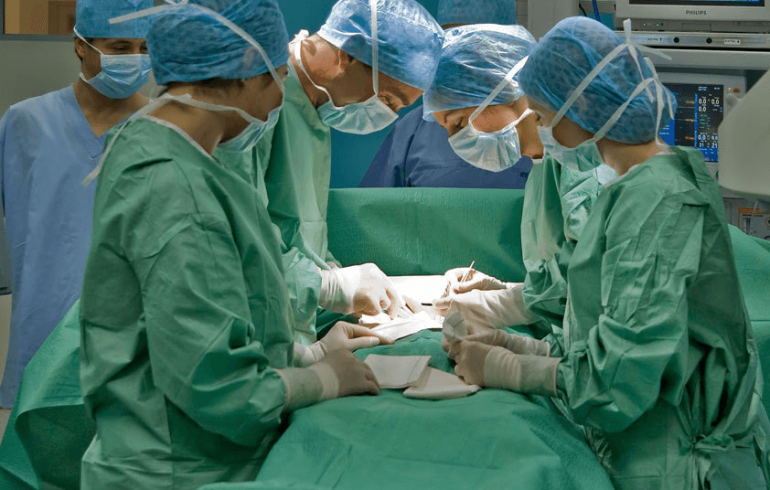Today, with this fast-moving life, we are so occupied with the hectic lives that we fail to spare some time for our health. It is said that
“Health brings a freedom very few realise until they no longer have it.”
There are some situations where one has to make tough health decisions in life. This decision may be removing a part of your body. That is where you realize the worth of health. One such problem is hysterectomy or uterus removal.
News update:
Recently, a well-known sitar player Anoushka Shankar revealed that she no longer has a uterus. She said that her uterus made her look six months pregnant. She chose to go for a hysterectomy that removed large fibroids and multiple tumors from her abdomen. She went into short-term depression when she got to know about her problem.
She said, ‘The news triggered fears about my womanliness, my possible desire to have more children in the future, the fear of dying in surgery and leaving my kids without a mother, the effect the changes may have on my sex life and more. I spoke to friends and family about my news and was shocked to discover how many women had hysterectomies although I’d never known they had.’ She was surprised that hysterectomy was not so common and said that women must not be embarrassed to talk about their sexual health.
Know more about hysterectomy
Hysterectomy is a surgical procedure carried out to remove the uterus. Uterus, where a woman carries her baby when she is pregnant. Depending on your condition, the doctor may remove the fallopian tubes and ovaries. After a woman gets a hysterectomy, she no longer has menstrual periods and can not become pregnant.
Why a woman might need a hysterectomy?
A hysterectomy is for women who experience the following problems:
- Abnormal bleeding
During menstrual periods, some women go through a lot of pain and heavy bleeding. Sometimes there is irregular bleeding that makes them weak and leads to anemia.
- Uterine fibroids
These are muscle balls that may increase in size and lead to abnormal bleeding.
- Uterine prolapse
This happens when the uterus slips from its place into the vagina.
- Adenomyosis
Lines develop inside the uterus wall that thickens them leading to excessive bleeding and pain.
- Endometriosis
It happens when lines inside the uterus grow outside the uterus, on the ovaries where it should not be. This causes severe pain and heavy bleeding.
There are types of hysterectomy
Hysterectomy is categorized into four:
- Partial Hysterectomy – Removal of the uterus
- Total Hysterectomy – Removal of the uterus along with the cervix
- Total Hysterectomy with bilateral salpingo-oophorectomy – Removal of uterus, cervix, fallopian tubes and ovary
- Radical Hysterectomy with bilateral salpingo-oophorectomy – Removal of uterus, cervix, fallopian tubes, ovary and upper part of the vagina including surrounding tissues
Hysterectomy in India
Here is the percentage of women undergone hysterectomy in India between the age group 30-49 in the year 2015-2016.

How is hysterectomy performed?
There are different ways hysterectomy is performed depending on the patient’s condition, health history and the doctor’s expertise.
- Abdominal hysterectomy
The uterus is removed through the abdominal incision which is also known as open surgery.
- Vaginal hysterectomy
This procedure is done through a cut in the vagina. Sometimes the doctor uses a laparoscope during vaginal hysterectomy. It is known as laparoscopic-assisted hysterectomy.
- Laparoscopic hysterectomy
Laparoscopic hysterectomy is a minimally invasive procedure and is commonly performed these days for uterus removal.
What happens after a hysterectomy?
In the case of abdominal and vaginal hysterectomy, the hospital stay is longer. Complete bed rest is suggested by doctors and a lot of diet restrictions along with extra care.
If a woman goes for laparoscopic hysterectomy, she usually gets discharged within 24-48 hours of the surgery. She may be able to perform her daily chores within 4-5 days but strenuous tasks must not be performed for a month.
Benefits of hysterectomy
There are advantages of laparoscopic hysterectomy over traditional methods :
- Short operative time
- Quick recovery
- Day procedure
- No big cuts and less bleeding
- Negligible risk of complications
If she follows post-surgery instructions, the recovery is easy and quick. Also, to resume your sexual life, consult a doctor to check if you have recovered from hysterectomy. You may experience some dryness, so use lubricants or talk to the doctor about it for best advice.
Is there any side-effect of hysterectomy?
Remember, for those who still get menses, menstruation will no longer occur. You will not be able to conceive after hysterectomy. A lot of women believe that hysterectomy affects libido levels and sexual pleasure, but that is NOT TRUE!
There are short-term risks involved after hysterectomy:
- Blood loss (open surgery)
- Side effects of anesthesia
- Need to change from other hysterectomy to abdominal
- Damage to surrounding bladder tissues, which can be resolved with kegel exercises and pelvic floor exercises.
Conclusion
Hysterectomy is a major change for a woman’s body. Recovery takes some time but quality-life is expected after hysterectomy. There is great relief from symptoms such as heavy bleeding, excess pain during periods, fibroids and a lot more. Pristyn Care provides laparoscopic hysterectomy using the latest technology. It is a painless procedure without any complications. The changes that appear after hysterectomy are menopause, vaginal dryness, unable to become pregnant and some hormonal concerns that can all be taken care of once you talk to your doctor. So, prevention is in your hands, do not be embarrassed to share your intimate problems. Get in touch with Pristyn Care for best gynecological consultation..






